Abstract
The pharmacokinetic properties of amikacin (BBK8) were similar to those of kanamycin in newborn infants. Peak serum concentrations of both drugs were in the range of 15 to 25 μg/ml with the exception of kanamycin in babies weighing greater than 2,000 g at birth where peak levels were 12.5 to 15 μg/ml. Volumes of distribution, plasma clearances, and serum half-life values were comparable for the two drugs. The clinical and bacteriological responses to amikacin therapy were assessed in 45 neonates with bacterial diseases. A case fatality rate of 26% was observed in infants with septicemia and/or meningitis, whereas no deaths occurred among 22 infants with urinary tract and mucocutaneous infections. Cultures from infected sites were sterile within 72 h of initiating amikacin therapy in 47% of the infants, continued positive for greater than 72 h in 31%, and were not reevaluated during therapy in 22%. The clinical response was judged to be satisfactory in 92% of the surviving infants. The efficacy of amikacin was comparable to that of kanamycin or gentamicin in neonatal bacterial diseases.
Full text
PDF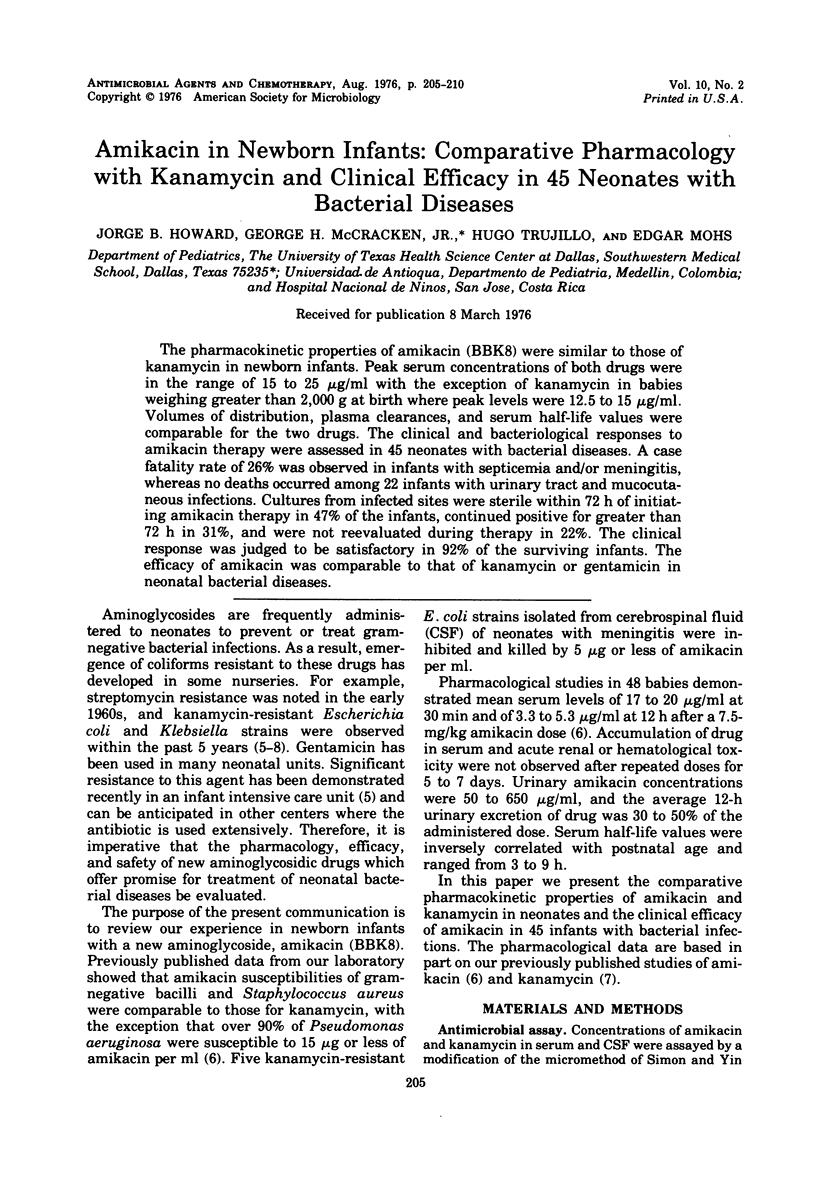
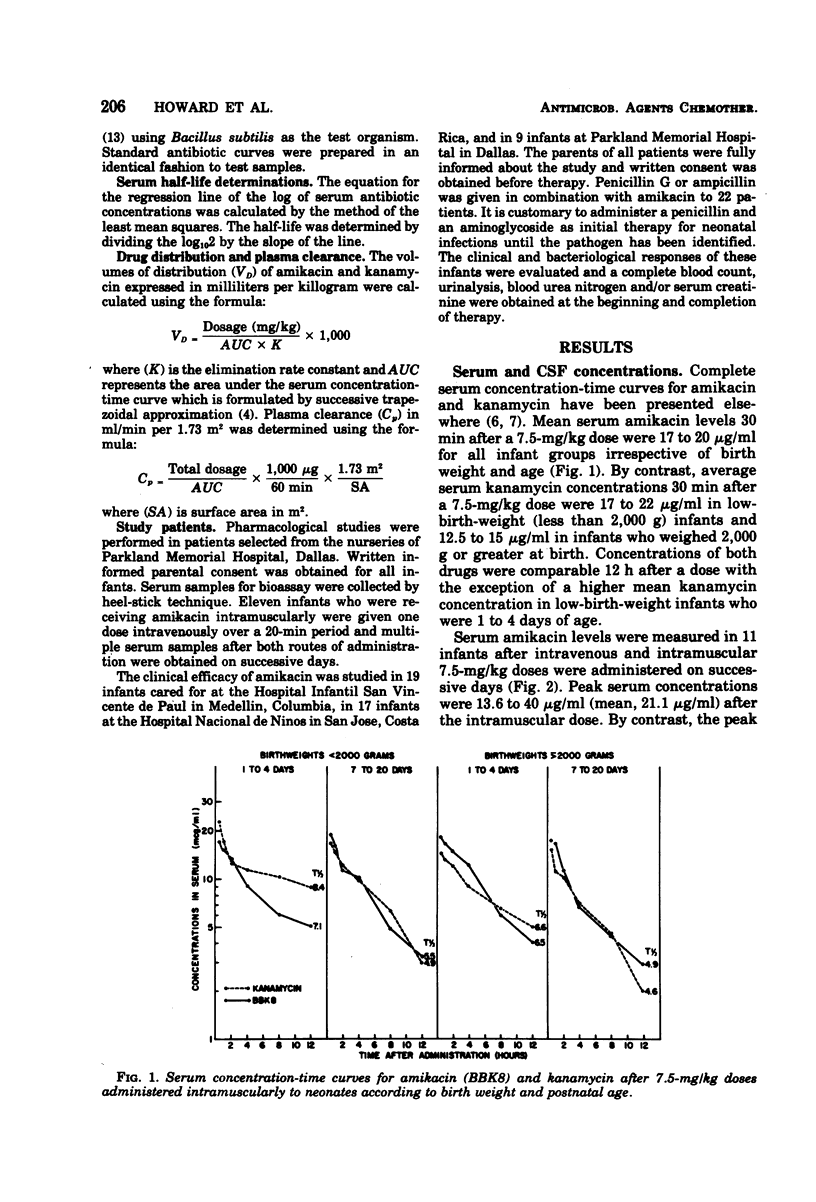

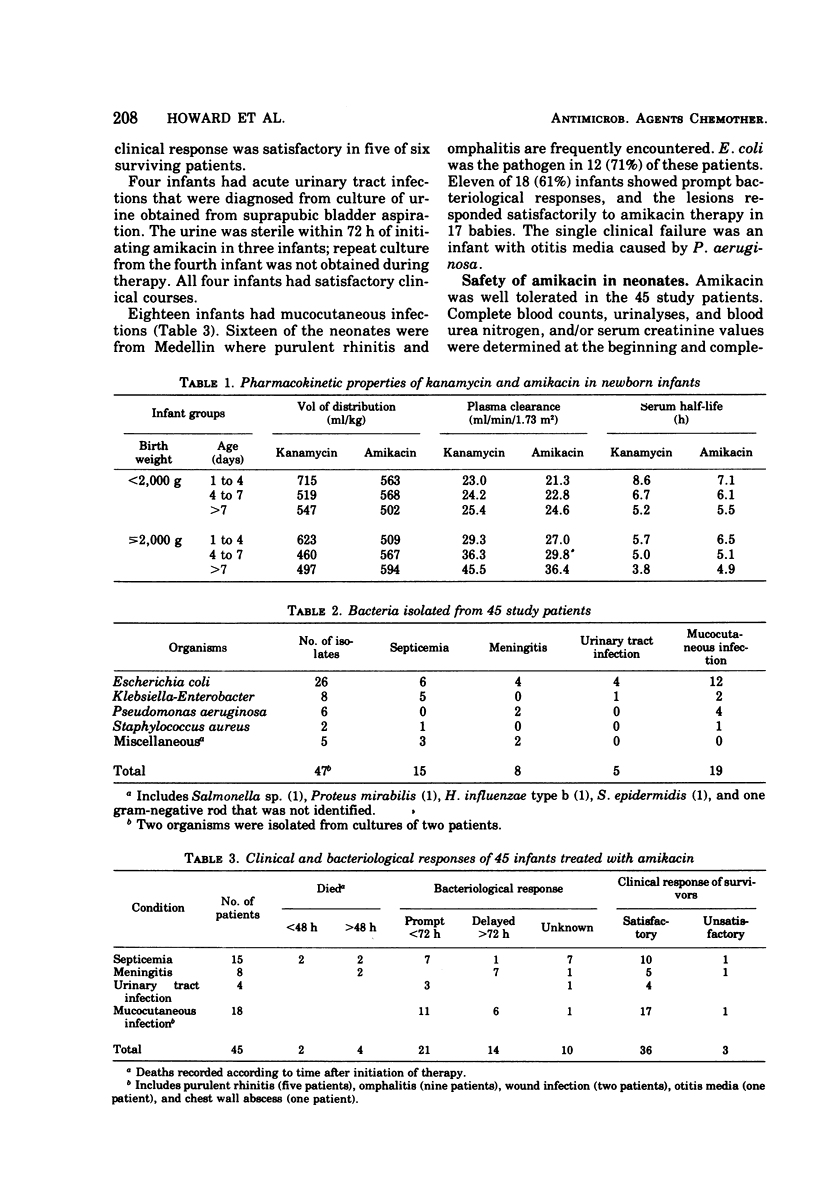
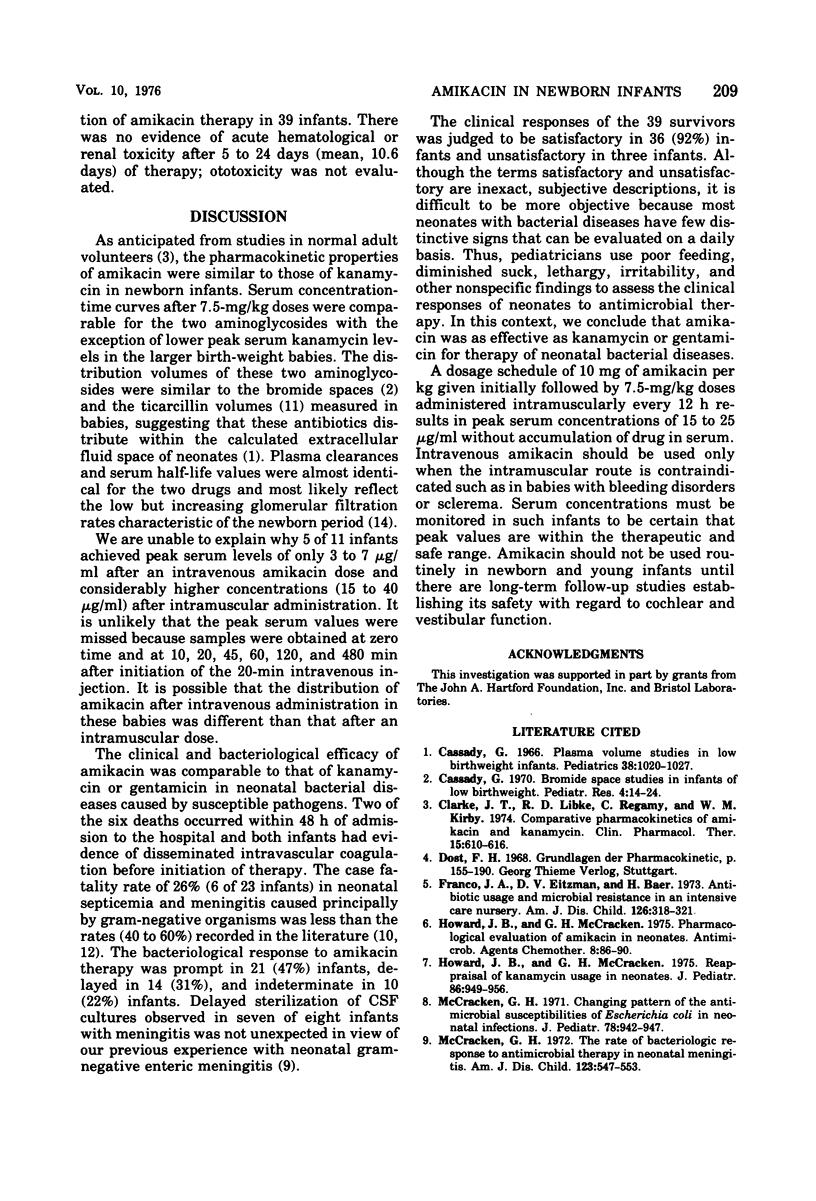
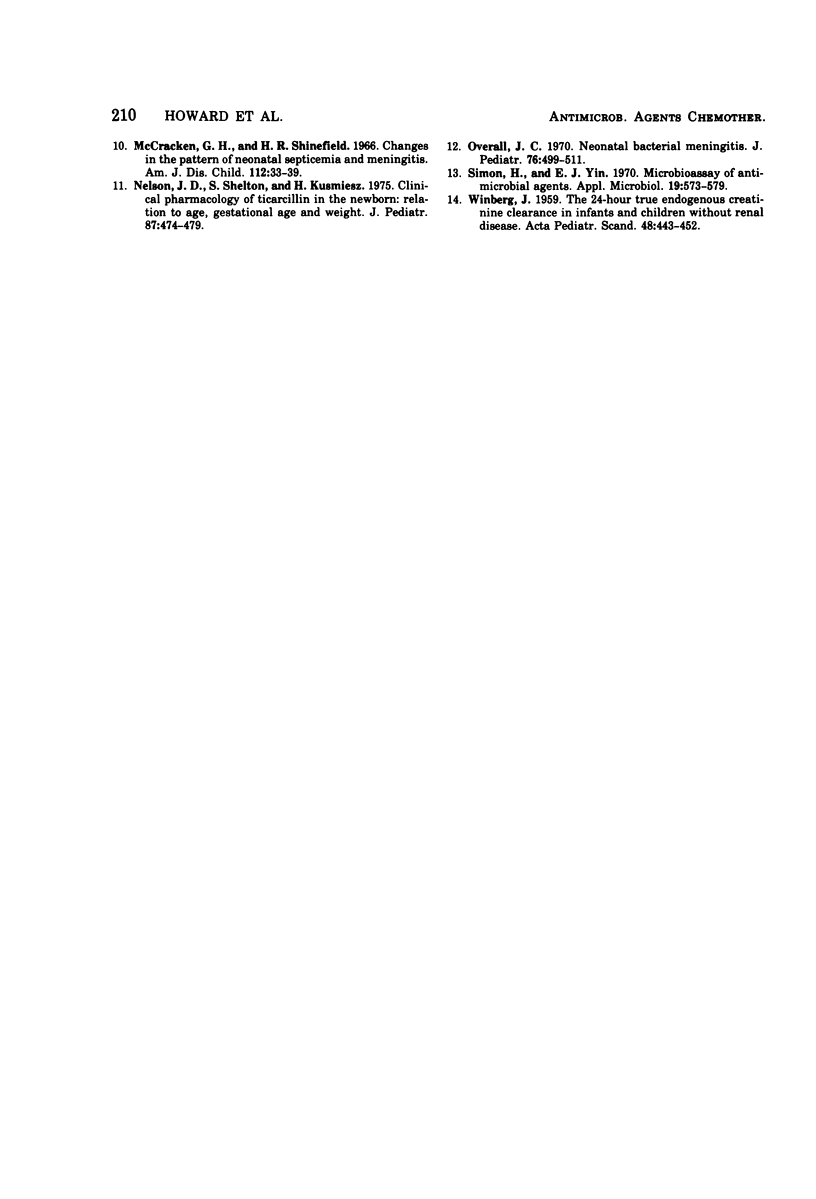
Selected References
These references are in PubMed. This may not be the complete list of references from this article.
- Cassady G. Bromide space studies in infants of low birth weight. Pediatr Res. 1970 Jan;4(1):14–24. doi: 10.1203/00006450-197001000-00002. [DOI] [PubMed] [Google Scholar]
- Cassady G. Plasma volume studies in low birth weight infants. Pediatrics. 1966 Dec;38(6):1020–1027. [PubMed] [Google Scholar]
- Clarke J. T., Libke R. D., Regamey C., Kirby W. M. Comparative pharmacokinetics of amikacin and kanamycin. Clin Pharmacol Ther. 1974 Jun;15(6):610–616. doi: 10.1002/cpt1974156610. [DOI] [PubMed] [Google Scholar]
- Franco J. A., Eitzman D. V., Baer H. Antibiotic usage and microbial resistance in an intensive care nursery. Am J Dis Child. 1973 Sep;126(3):318–321. doi: 10.1001/archpedi.1973.02110190280006. [DOI] [PubMed] [Google Scholar]
- Howard J. B., McCracken G. H., Jr Pharmacological evaluation of amikacin in neonates. Antimicrob Agents Chemother. 1975 Jul;8(1):86–90. doi: 10.1128/aac.8.1.86. [DOI] [PMC free article] [PubMed] [Google Scholar]
- Howard J. B., McCracken G. H., Jr Reappraisal of kanamycin usage in neonates. J Pediatr. 1975 Jun;86(6):949–956. doi: 10.1016/s0022-3476(75)80234-4. [DOI] [PubMed] [Google Scholar]
- McCracken G. H., Jr Changing pattern of the antimicrobial susceptibilities of Escherichia coli in neonatal infections. J Pediatr. 1971 Jun;78(6):942–947. doi: 10.1016/s0022-3476(71)80422-5. [DOI] [PubMed] [Google Scholar]
- McCracken G. H., Jr, Shinefield H. R. Changes in the pattern of neonatal septicemia and meningitis. Am J Dis Child. 1966 Jul;112(1):33–39. doi: 10.1001/archpedi.1966.02090100069006. [DOI] [PubMed] [Google Scholar]
- McCracken G. H., Jr The rate of bacteriologic response to antimicrobial therapy in neonatal meningitis. Am J Dis Child. 1972 Jun;123(6):547–553. doi: 10.1001/archpedi.1972.02110120071004. [DOI] [PubMed] [Google Scholar]
- Nelson J. D., Shelton S., Kusmiesz H. Clinical pharmacology of ticarcillin in the newborn infant: relation to age, gestational age, and weight. J Pediatr. 1975 Sep;87(3):474–479. doi: 10.1016/s0022-3476(75)80664-0. [DOI] [PubMed] [Google Scholar]
- Overall J. C., Jr Neonatal bacterial meningitis. Analysis of predisposing factors and outcome compared with matched control subjects. J Pediatr. 1970 Apr;76(4):499–511. doi: 10.1016/s0022-3476(70)80399-7. [DOI] [PubMed] [Google Scholar]
- Simon H. J., Yin E. J. Microbioassay of antimicrobial agents. Appl Microbiol. 1970 Apr;19(4):573–579. doi: 10.1128/am.19.4.573-579.1970. [DOI] [PMC free article] [PubMed] [Google Scholar]
- WINBERG J. The 24-hour true endogenous creatinine clearance in infants and children without renal disease. Acta Paediatr. 1959 Sep;48:443–452. [PubMed] [Google Scholar]


